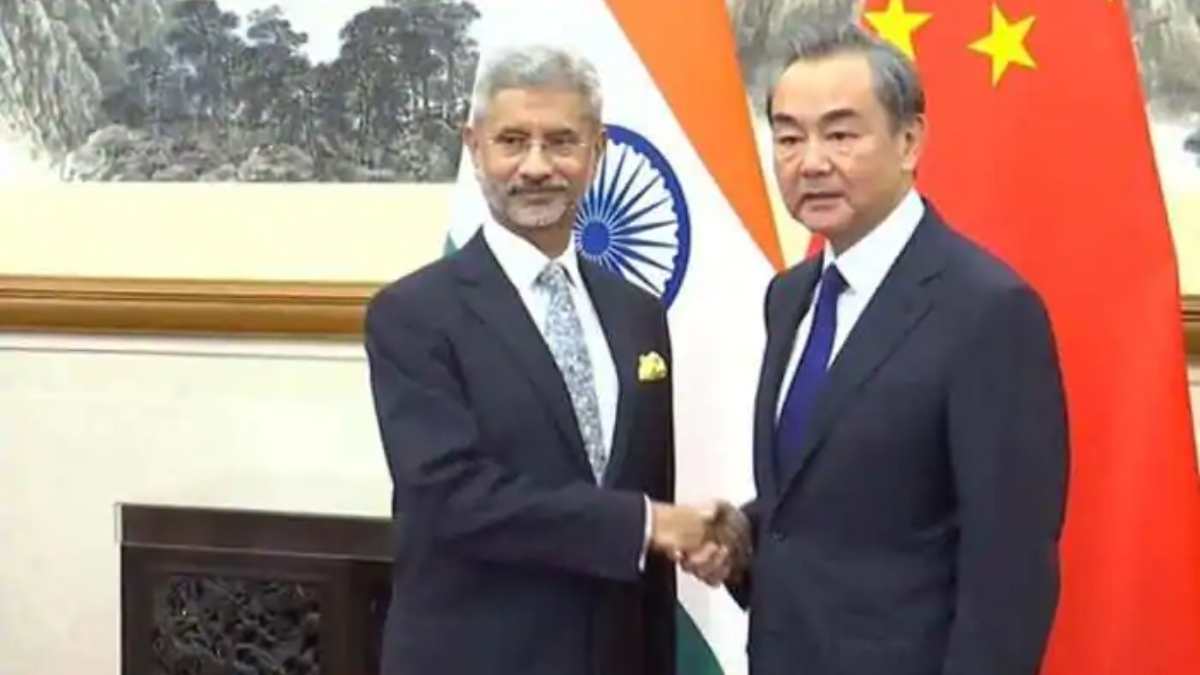


World War II troops enriched the English language with a lot of creative acronyms, given the armies’ penchant for using abbreviations officially to suit wireless transmission in those days. Among them, SNAFU, an acronym for “Situation Normal, All F****d Up”, was an all-time favourite adopted by armies over the world. It is now firmly established as part of conventional English usage, though 20th-century prudery has provided “fouled up” as a convenient fig leaf on the last two words of the acronym.
SNAFU aptly describes the current state of India-China relations, even after the foreign ministers of the two countries met in Moscow on 10 September. This is the sad conclusion one can draw after carefully reading the joint press statement issued by the MEA after External Affairs Minister S. Jaishankar and his Chinese counterpart, Wang Yi, had a two-and-half-hour meeting. The photo op at the meeting tells it all: Jaishankar with a half-smile, a beaming Russian Foreign Minister Sergey Lavrov, having “successfully arranged” the meeting, and Wang Yi with a painful smile.
Two key operative words germane to resolving the border confrontation — the LAC and status quo ante — are missing in the joint statement. It is logical to conclude that the core differences between these two aspects will continue to dominate relations in the coming days. The short preamble and the five points of the joint press statement give an inkling of what happened (and did not happen) at the meeting.
1. It is obvious the only thing the two ministers have agreed on is that both sides should take guidance from the series of consensus of the two leaders — Prime Minister Narendra Modi and President Xi Jinping — on developing India-China relations, “including not allowing differences to become disputes”. The purpose of the whole meeting was just to do that; apparently, little progress has been made on this respect. Now, it has been left to PM Modi and President Xi to take a further call on this.
2. The two ministers “agreed that the current situation in the border areas is not in the interest of either side”. Therefore, they agreed that “the border troops of both sides should continue their dialogue, quickly disengage, maintain proper distance and ease tensions”. This is what the local and regional commanders had been trying to do May 2020 onwards, without success. Otherwise, the violent clash in Galwan heights in June 2020 would not have happened. So, the situation on the ground, after Indian troops had occupied key heights to deny further ingress of Chinese troops, can be expected to continue just as the Chinese deployment will. While they can continue the dialogue, it is not clear how they can be expected to quickly disengage and maintain ‘proper distance’ (military confrontation is not a coronavirus precaution. In military parlance, there is no such thing as ‘proper distance’.)
3. They “agreed that both sides shall abide by all the existing agreements and protocol on China-India boundary affairs, maintain peace and tranquility in the border areas and avoid any action that could escalate matters”. Actually, the Galwan clash and the Indian troops’ recent actions to vitiate further attempts of Chinese troops to occupy territory have shown how China’s repeated violation of these agreements and protocols has made them ineffective. It is facile to expect that they would do so when they are confronting each other eyeball to eyeball.
4. “The two sides also agreed to continue to have dialogue and communication through the Special Representative mechanism on the India-China boundary question.” Does this mean that what could not be achieved after 22 rounds of discussion should continue? Perhaps, it is to buy time for Xi to find a face-saving method to “manage” the mess in India. “They also agreed in this context that the Working Mechanism for Consultation and Coordination on IndiaChina border affairs (WMCC) should also continue its meetings.” What will they discuss? India’s continuing ban on Chinese apps? Or the process of vetting Chinese investments in India? No wonder, the Chinese press release issued one hour before the joint press statement, giving its own construct and quoting Jaishankar telling Wang Yi, said India did not want “tension to escalate” along its disputed border with China. He was also quoted as saying that India’s policy toward China had not changed and that New Delhi believed that China’s policy toward India had also not changed.
5. The ministers agreed that “as the situation eases”, the two sides should “expedite work to conclude new Confidence Building Measures to maintain and enhance peace and tranquillity in the border areas”. It is difficult to imagine that local military regional commanders would agree to “ease the situation” by talking to each other without higher direction from their governments. Regarding Confidence Building Measures, the less said the better. The Chinese have shown by their actions over the years that these measures are a one-way street for them to grab more territory.
It is difficult to view this as a genuine “constructive engagement” as claimed in the statement when the obvious has been reiterated. It does not require tea leaves to foresee that the India-China standoff is in for a long haul. And for the troops freezing on the inhospitable heights, it is SNAFU, in short.
The writer is a retired MI specialist on South Asia and terrorism. He is actively associated with the Chennai Centre for China Studies.